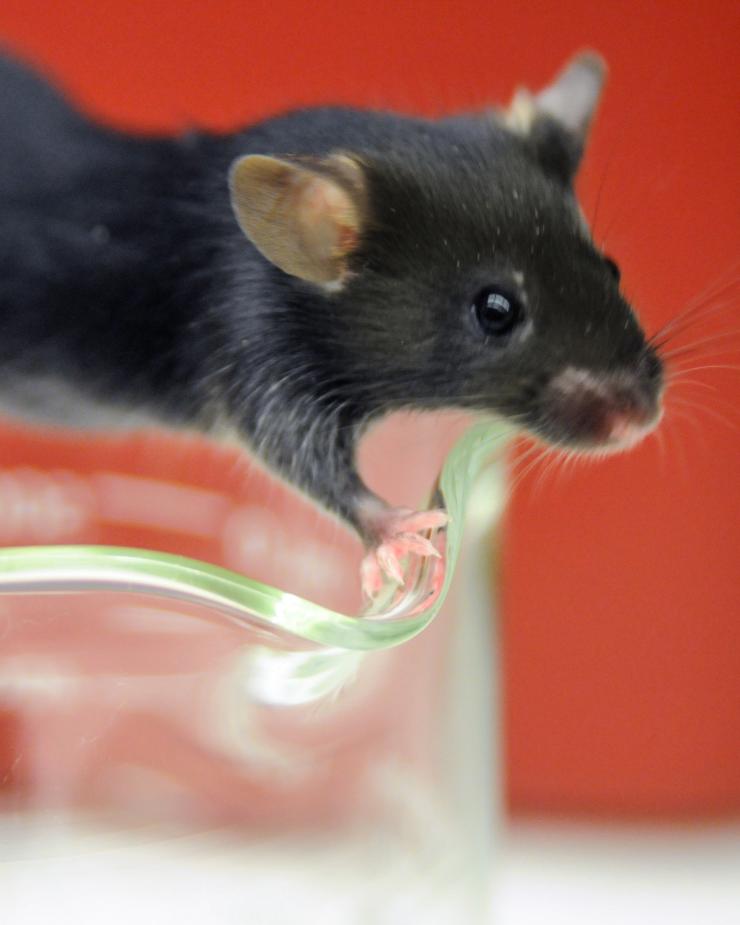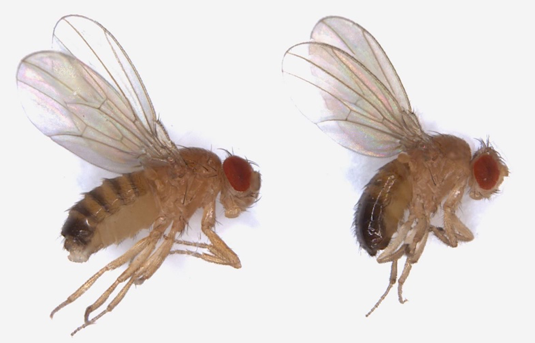ÔÚĎßşÚÁĎĂĹ the Core

Poor reproducibility of published research employing model organisms and lack of transparency of study designs are areas of concern for the scientific community. These issues can profoundly affect the interpretation of preclinical studies and must be addressed as genome editing technologies permit rapid modeling of disease-associated genetic variation and translation to the clinic. At the heart of reproducibility issues are the model organism themselves. Stability and identity of the genetic background, genome integrity, and specifics of genetically engineered alleles often vary between studies. Moreover, variabilities in the quality of study designs used by different groups, including differences in the environment, methods for phenotyping, instrumentation, sample sizes, and data analysis and statistical methods, can significantly impact study conclusions. Centralization and standardization of production, maintenance, and phenotyping pipelines for precision and pre-clinical animal models can begin to address issues with study reproducibility and transparency.

The Resources and Services Core maintains and distributes the high-quality fly and mouse model resources produced by the center. The core characterizes alleles produced by the Disease Modeling Unit, maintains and tracks colonies/stocks, and provide animal cohorts to the Disease Modeling Unit for phenotyping experiments. The core functions as the primary contact for outside investigators seeking access to our services and is responsible for communicating the availability of standardized, transparent, and high-quality services to the outside research community.
Core Members
- Denise Lanza Ph.D. (Lead)
- Hugo Bellen, D.V.M., Ph.D. (Co-Lead)
- Oguz Kanca, Ph.D.
Fly Resources Available from the Baylor CPMM
| Human Gene | Human Variant(s) Being Modeled | Disease Association of Variant(s) Being modeled | Fly Mutant or Transgenic line: (Reagent Description) | Request Fly |
|---|---|---|---|---|
| Missense and nonsense variants | Previously reported variants in and a novel variant related to a potential phenotypic expansion of AXIN2-related disorder | (T2A-GAL4 allele of the fly ortholog Axn) | ||
| UAS-AXIN2 (UAS transgenic line that allows the expression of human AXIN2 without a tag) | Request from Yamamoto lab | |||
| UAS-AXIN2p.E66K(UAS transgenic line that allows the expression of human AXIN2 with a p.E66K variant) | Request from Yamamoto lab | |||
| UAS-AXIN2p.R656X(UAS transgenic line that allows the expression of human AXIN2 with a p.R656X variant) | Request from Yamamoto lab | |||
| UAS-AXIN2p.R663X(UAS transgenic line that allows the expression of human AXIN2 with a p.R663X variant) | Request from Yamamoto lab | |||
| Missense variants | Potential novel disease | (T2A-GAL4 allele of the fly ortholog CG7236) | ||
| UAS-CDKL1::HA (UAS transgenic line that allows the expression of human GPKOW tagged with a C’-3xHA tag) | ||||
| UAS-CDKL1 p.V115A::HA (UAS transgenic line that allows the expression of human CDKL1 with a p.V115A variant tagged with a C’-3xHA tag) | Request from Yamamoto lab | |||
| UAS-CDKL1 p.R168C::HA (UAS transgenic line that allows the expression of human CDKL1 with a p.R168C variant tagged with a C’-3xHA tag) | Request from Yamamoto lab | |||
| Missense variants | Potential novel disease | (Kozak-GAL4 allele of the fly ortholog Hel25E) | Request from Bellen Lab | |
| UAS-DDX39B (UAS transgenic line that allows the expression of human DDX39B without a tag) | Request from Yamamoto lab | |||
| UAS-DDX39Bp.G37C(UAS transgenic line that allows the expression of human DDX39B with a p.G37C variant) | Request from Yamamoto lab | |||
| UAS-DDX39Bp.G92D (UAS transgenic line that allows the expression of human DDX39B with a p.G92D variant) | Request from Yamamoto lab | |||
| UAS-DDX39Bp.R123Q(UAS transgenic line that allows the expression of human DDX39B with a p.R123Q variant) | Request from Yamamoto lab | |||
| Missense variants | Potential novel disease | (T2A-GAL4 allele of the fly ortholog fry) | ||
| (Internally GFP tagged allele of fry) | ||||
| (Internally GFP tagged allele of fry) | ||||
| (knock-in allele of p.F2024L variant in fry generated using prime editing) | Request from Bellen Lab | |||
| (knock-in allele of p.F2746S variant in fry generated using prime editing) | Request from Bellen Lab | |||
| (knock-in allele of p.F2024L variant in fry generated using recombinase mediated cassette exchange (RMCE) of a MiMIC element) | Request from Bellen Lab | |||
| (knock-in allele of p.F2746I variant in fry generated using RMCE of a MiMIC element) | Request from Bellen Lab | |||
| (knock-in allele of p.F2910I variant in fry generated using RMCE of a MiMIC element) | Request from Bellen Lab | |||
| (knock-in allele of p.Y3410C variant in fry generated using RMCE of a MiMIC element) | Request from Bellen Lab | |||
| (knock-in allele of wild-type fry gene generated using RMCE of a MiMIC element, which serves as a control) | Request from Bellen Lab | |||
| Frameshift variant | Potential novel disease | (Kozak-GAL4 allele of the fly ortholog CG10324) | Request from Bellen Lab | |
| UAS-GPKOW::HA (UAS transgenic line that allows the expression of human GPKOW tagged with a C’-3xHA tag) | Request from Yamamoto lab | |||
| UAS-GPKOWp.S444EfsX28::HA (UAS transgenic line that allows the expression of human GPKOW with a p.S444EfsX28 variant tagged with a C’-3xHA tag) | Request from Yamamoto lab | |||
| Various missense variants | (T2A-GAL4 allele of the fly ortholog Uba5) | |||
| (Null allele of the fly Uba5) | Request from Bellen Lab | |||
| (a ~88kb BAC that can be used as a genomic rescue transgene for fly Uba5) | ||||
| (UAS transgenic line that allows the expression of human UBA5 tagged with a C’-3xHA tag) | ||||
| (UAS transgenic line that allows the expression of human UBA5 without a tag) | ||||
| (UAS transgenic line that allows the expression of human UBA5 with a p.A371T variant) | ||||
| (UAS transgenic line that allows the expression of human UBA5 with a p.D389G variant) | ||||
| (UAS transgenic line that allows the expression of human UBA5 with a p.D389Y variant) | ||||
| (UAS transgenic line that allows the expression of human UBA5 with a p.M57V variant) | ||||
| (UAS transgenic line that allows the expression of human UBA5 with a p.V260M variant) | ||||
| (UAS transgenic line that allows the expression of human UBA5 with a p.Y53F variant) | ||||
| (UAS transgenic line that allows the expression of human UBA5 with a p.R55H variant) | ||||
| (UAS transgenic line that allows the expression of human UBA5 with a p.R72C variant) | ||||
| (UAS transgenic line that allows the expression of human UBA5 with a p.C250A variant) | ||||
| (UAS transgenic line that allows the expression of human UBA5 with a p.L254P89G variant) | ||||
| UAS-UBA5p.Q312L (UAS transgenic line that allows the expression of human UBA5 with a p.Q312L variant) |
Mouse Resources Available from the Baylor CPMM
| Human Gene | Human Variant(s) Being Modeled | Disease Association of Variant(s) Being modeled | Mouse Allele Description and Genetic Background | Request Mice |
|---|---|---|---|---|
| Various loss of function mutations | Constitutive KO C57Bl/6NJ | |||
| NM_000477.7:c.53C>T; p.Ser18Phe | No established disease association | Constitutive KI C57Bl/6J | Request from center | |
| No established disease association | Constitutive KI C57Bl/6J | Request from center | ||
| Previously reported variants in and a novel variant related to a potential phenotypic expansion of AXIN2-related disorder | Constitutive KO C57Bl/6J | Request from center | ||
| hg38 3: 165,772,904-165,837,462 | Constitutive KO C57Bl/6J | Request from center | ||
Conditional KI C57Bl/6J | Request from center | |||
Conditional KI C57Bl/6J | Request from center | |||
Constitutive KI C57Bl/6J | Request from center | |||
| Various loss of function mutations | No established disease association | Interval Deletion C57Bl/6J | Request from center | |
Constitutive KI C57Bl/6J | Request from center | |||
Constitutive KI C57Bl/6J | ||||
| NM_013392.4:c.272G>A; p.G91D | No established disease association | Constitutive KI C57Bl/6J | Request from center | |
| No established disease association | Constitutive KI C57Bl/6J | Request from center | ||
Constitutive KI C57Bl/6J | Request from center | |||
| , | Uba5em3Bay Constitutive KI C57Bl/6J | Request from center | ||
Constitutive KI C57Bl/6J | ||||
| NM_024818.6 c.934A>G; p.Q312L | Constitutive KI C57Bl/6J | |||
| Loss of function mutation | Conditional KO C57Bl/6J | |||
Constitutive KO C57Bl/6J | ||||
| hg38 X: 41,207,032-41,212,350 x1 | No established disease association | Conditional KO C57Bl/6J | Request from center |




